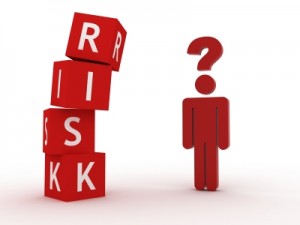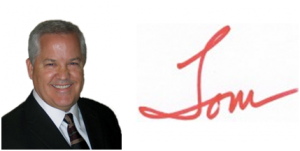 The archetypical strategy story goes something like this …
The archetypical strategy story goes something like this …
“A small gathering of senior leaders is convened at a secluded site. The atmosphere is serious. An important decision is needed. Everyone there knows the competitors. They are attacking. Some of their attacks have been beaten back. As for the others, well, that is why the meeting is so urgent. The leader stands to speak. We must counterattack. Our stockholders and employees depend on our decisions. The organization must be aligned around a common strategy. What is that strategy to be? So many actions, priorities and resources must be congruent with it. It is time to act. Here is what we are going to do.”
When this scenario (or one like it) occurs, some days or weeks later various parts of the organization get their new assignments. Sales must target new customers. Perhaps their incentive programs are adjusted to reflect the new priorities. Marketing must adapt the product line messages to feature new attributes of the augmented product. Engineering must invest in different technologies to support new product features. Meanwhile, competitive intelligence gets new marching orders to track and report on new competitors and markets.
This is top-down strategy development. Sometimes this works spectacularly well.
Consider the case of Intel. As recounted in the book “Strategy is Destiny” by Robert Burgelman, Intel followed a top-down strategy process that, starting from the early 1980’s to about 1998, relentlessly focused the company on microprocessors. More specifically, Intel created, promoted and sold ever-increasing performance for the Intel Architecture instruction set. Because of their focus, scale and ecosystem (think of the WinTel “alliance”) of software developers, Intel reaped incredible profits. Within the organization, everything was subordinated to this mandate. Andy Grove and other executives explicitly understood and reinforced this top-down strategy. Because the strategy was dictated from the top, all supportive processes (including competitive intelligence) became similarly top-down in nature. As long as there was growth, profits and market share, this worked well.
Interestingly, despite the executive mandates, other businesses emerged from within Intel. Some will recall the RISC (the x86 is CISC) architecture and products (i860, i960 processors) that were produced for a few years. Andy Grove spoke about the strategic dilemma that this caused.
“We now had two very powerful chips that we were introducing at just about the same time: the 486, largely based on CISC technology and compatible with all the PC software, and the i860, based on RISC technology, which was very fast but compatible with nothing. We didn’t know what to do. So we introduced both, figuring we’d let the marketplace decide. … our equivocation caused our customers to wonder what Intel really stood for, the 486 or i860?”
Eventually the dilemma was resolved in favor of the CISC based x86 architecture product line.
However, another example from Intel points out the positive possibilities of emergent strategies. It involved the design and production of motherboards that contained the Intel microprocessors. At one time, partners primarily performed this task. Intel provided information to them and sold components. PC manufacturers bought the motherboards from Intel’s partners. As the processors became more complex and performance more critical, many of the partners could not design and build the motherboards that would highlight (and differentiate) the Intel microprocessors effectively. This was a threat to Intel because it meant that AMD and others could credibly market similar products. Within Intel, an unscripted response to this threat emerged. Simply, Intel began designing and manufacturing the motherboards. Though it started small and without a top-down strategy mandate, it became a significant business for Intel in the 1990’s.
What does all of this have to do with competitive intelligence?
Because competitive intelligence is a supportive strategy function, the structure and processes used by the competitive intelligence people often reflect the business strategies. That is, when strategies are well known, competitors are confidently identified and threats are well characterized, the competitive intelligence function is organized to reflect those realities. Its role is to reliably produce accurate information to help answer the fundamental question, “How do we continue to execute our successful strategy to maximize our results?” Commonly, the competitive intelligence team leans toward repeatable processes supported by comprehensive infrastructures to answer this question for strategy decision-makers. When a strategy is as successful as Intel’s, this is a valuable service to a company. However, few technologies companies have such sustained runs. Thus, a competitive intelligence function must consider more than what is well known or established within the company.
For instance, take the more common case where the strategy does not have a 15-year lifetime of enormous growth and profit. In those situations where strategy changes occur more often or competitive threats are less predictable, a top-down structure for competitive intelligence has some risks. The risks are evident when the top-down strategy prevents or discourages a balanced view of the competitive environment. You can observe this happening when assumptions about the environment prematurely harden or business model risks go unmonitored. Sometimes the thought of disruptions (both opportunities and threats) may be devalued since this “distracts” from near term strategy execution.
What is the antidote? It is simply to balance the highly structured, top-down competitive intelligence efforts with an intentional focus on “emergent” competitive intelligence.
“Emergent” (bottoms-up) competitive intelligence is disruption focused, less structured and (somewhat) untied to the established business strategy for the company. It cannot be fully described ahead of time in the form of key questions. Instead, it refers more commonly to thematic threats in the competitive environment. It requires different thought processes. For example, rather than receiving questions from strategy leaders to direct activities, emergent competitive intelligence must identify new key questions and supply them to the strategy decision-makers. A key role of emergent competitive intelligence is to stimulate strategy refinement by supplying valuable and unanticipated competitive intelligence information.
Here are thoughts about doing emergent competitive intelligence effectively.
- Reserve time, energy and resources. It is critical to get senior management agreement to spend time on emergent threats. One way to argue for this latitude is to assemble a set of case studies about how surprising developments have upset successful strategies. Both business and military history is replete with such examples.
- Develop appropriate processes. Highly repetitive, structured processes solve important problems. However, looking for the unexpected requires processes that deal with more competitive noise because the sources are more diverse and the “signal” is, by definition, less well characterized. The right information filters are required.
- Emphasize networks. Primary sources are important for all types of competitive intelligence. They are even more important for emergent competitive intelligence. Cultivating an effective network is often the only way to get early insight into the unexpected. The network must be constructed intentionally to be forward looking and early adopter oriented.
- Activate the organization. The first network is within the organization. In my opinion, a successful competitive intelligence function involves more than a small team. Activating the organization means creating an early warning system that systematically attempts to identify, discuss and characterize competitive threats. Emergent competitive intelligence facilitates early warning systems and gives key contributors product ways to participate.
- Tolerate higher risk. We are certain only about the past. However, some business results seem predictable based on momentum. Emergent competitive intelligence looks beyond the current momentum and that is why risk tolerance must increase. When the competitive intelligence team or management cannot accept this uncertainty, then they will forego potentially great advantages.
Emergent competitive intelligence complements “top-down strategy driven” competitive intelligence. A highly successful team balances the two perspectives. It uses different processes and tools to be effective for each perspective. When done well, an organization gains great benefits from both.
Do you find the description of “emergent competitive intelligence” applicable to your company or business?


[…] This post was mentioned on Twitter by Tom Hawes, August Jackson. August Jackson said: Google Reader: Emergent Competitive Intelligence http://bit.ly/5Ow1MY […]
Social comments and analytics for this post…
This post was mentioned on Twitter by 8of12: Google Reader: Emergent Competitive Intelligence http://bit.ly/5Ow1MY…